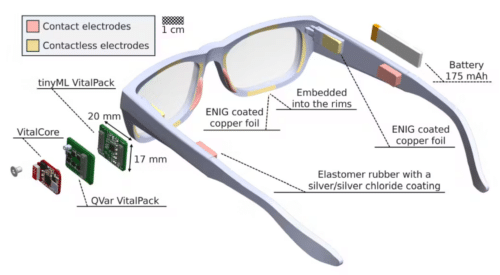The ETH Zurich team introduces ElectraSight, a hybrid eye-tracking system for smart glasses, combining contact and contactless methods.

Smart glasses are getting smarter and offering new ways to interact with devices and the world around us. Eye movements are one of the simplest and most natural ways to use them. By tracking where we look, the glasses can show relevant information about our surroundings or let us control digital tools without touching a screen or speaking. For example, looking at an item in a store might display its price, or glancing at a monument could show historical details. To do this, the glasses need eye-tracking systems, often using cameras. While accurate, these cameras are bulky, use much energy, and can cause privacy concerns, making them less practical for glasses.
A team at ETH Zurich has developed ElectraSight, a non-invasive hybrid contact and contactless eye-tracking system that can operate directly on smart glasses. Unlike earlier EOG-based solutions, ElectraSight offers improved accuracy for eye tracking.
The system uses low-power hardware to track eye movements by sensing tiny electrical signals generated by the eyes. Special sensors detect these signals, offering high accuracy while using little energy.
ElectraSight has three main parts: one acts as the control centre, another processes eye movement data, and the third handles the sensors. These parts work together to collect, send, and analyze data in real-time.
A small AI model classifies eye movements quickly and accurately, recognizing six movements with 92% accuracy and ten types with 81% accuracy. This model is very efficient, using minimal memory and no need for setup or adjustments for each user. Tests showed the system works with low delay, detecting most movements within 60 milliseconds and processing data in 301 microseconds.
The team also created a dataset of labelled eye movements to help improve future eye-tracking systems and support progress in smart glasses technology.






